This post may contain affiliate links. Please see our disclosure for more information.
For all my friends who love cauliflower, this is a simple recipe that’s filled with health benefits, as well as volumes of flavor.
The powerhouse ingredient lineup starts with the anti-inflammatory duo of turmeric cooked in ghee, a special form of clarified butter.
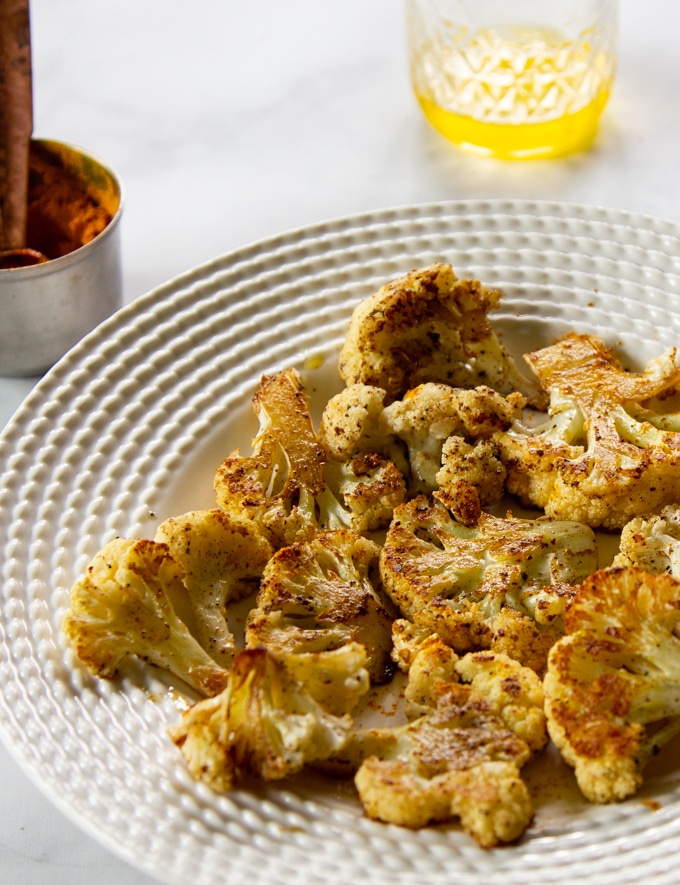
Ghee is basically butter that is simmered in a saucepan until all of the milk solids have settled out onto the bottom of the pot.
As it continues to gently simmer, the milk solids are caramelized to a deep milk chocolate brown, which is what gives ghee its cravable nutty flavor.
I love to assert that ghee is a “better butter.”
You can heat ghee to high temperatures without it burning as butter does. It can also be stored in the cupboard at room temperature for months without it spoiling.
Ghee is easy to make at home, and just as easy to buy online.
Once you’ve got some ghee, you can make this turmeric cauliflower. If you don’t “got some” you can always substitute with olive oil.
Simple Recipe Steps
Once you have your glorious ghee heated, add your turmeric powder. It will sizzle when it touches the ghee.
Then, if you like, sprinkle in a bit of red chili to broaden out the flavor of the turmeric cauliflower.
Now, add your prepared cauliflower slabs and a good dash of quality salt, and toss. Use a spoon or spatula to spread out the cauliflower in an even layer to cook.
Once your cauliflower is nicely browned on one side, turn each piece over carefully using a fork or skillet, and brown the turmeric cauliflower on the other side.
After less than 10 minutes of cooking, you’ll have a stack of satisfying, spiced cauliflower chunks that you can savor in so many ways.
>>See the section below for a bunch of ideas for how to turn this recipe into a completely meatless meal.
Make Turmeric Cauliflower Slabs In A Non-Stick Skillet
For the beautiful browning you want on your cauliflower, the best option is to use the largest non-stick skillet you own.
A well seasoned cast iron skillet, ceramic, or stainless steel skillet can also work if it is all you have.
I have been cooking with a large anodized aluminum skillet by Calphalon that I am surprised that I love.
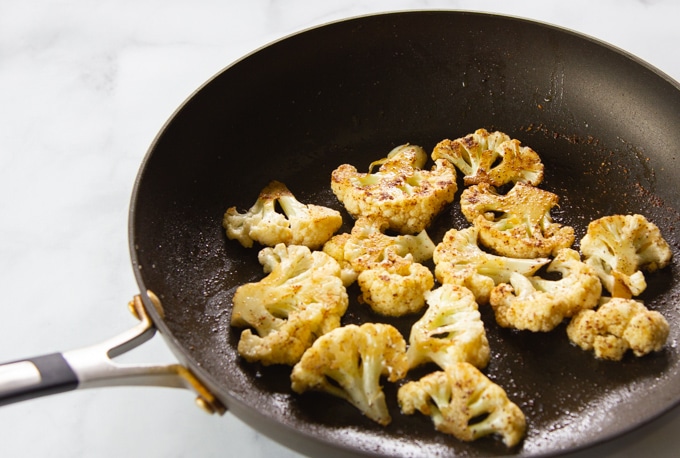
I regularly use Le Creuset and Staub cookware, but a large non-stick skillet is essential when you want something to brown evenly without any fuss.
I’d like to talk about non-stick surfaces for a minute, because they are useful, widely used, and controversial.
Now I am not a cookware expert, but I am sensitive to toxicity.
I bought my Calphalon by accident at a discount retailer. I didn’t even know what brand I was buying. Only that it looked, and felt, good to me.
I was pleased to find that it is truly non-stick, and the coating is very hard and durable.
It is unlike the old non-stick surfaces, which feel cheap and risky.
This surface is not at all easy to scratch, so it feels much safer to use. I have used a few ceramic surfaces, a so-called safer alternative, and not enjoyed using them. If you can recommend a good one, I’d love to hear about it in the comments.
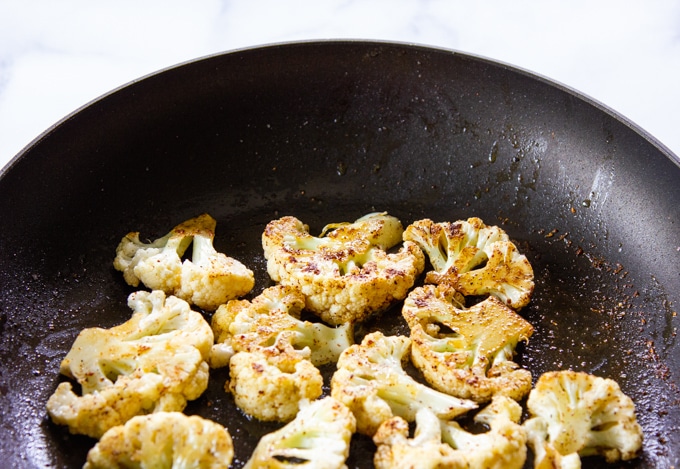
Many of the non-stick skillets on the market today, including those made by Rachel Ray, T-fal, All-Clad, Farberware, and Cusinart, are constructed with anodized aluminum.
The reason is due to the material being lightweight and super durable.
The brand differ by what their anodized aluminum surfaces are coated with. Thankfully, it appears that the worst of the offending chemicals have been removed from all major brands.
After a survey of the literature on non-stick cookware safety, the majority of concerns about non-stick cookware I saw were related to the potential carcinogenic danger of ingesting chemicals contained in non-stick coatings.
This is easy to avoid. If you see any of the coating on a non-stick surface flaking off, discard the item right away and buy a new one.
Reduce Your Risk & Enjoy The Benefits Of Non-Stick Cookware
For me, the benefits of a non-stick surface are worth withstanding the minor risks for occasional use.
What I decided is to focus on minimizing the risks as follows:
- Do not use non-stick cookware for high heat cooking. Leave the heat on medium, and take it slow.
- Do not use non-stick cookware in the oven, or under a broiler.
- Do not use metal utensils, or anything that can scratch the surface.
- Throw out any cookware with a scratched or flaking surface.
>>To learn more about anodized aluminum cookware, check this post.
What Can I Serve With My Turmeric Cauliflower Slabs?
My definition of cauliflower slabs are large slices of cauliflower of about a half-inch thick.
The reason I’ve chosen the slab shape is so that you can pretend this cauliflower is like a steak. Haha. Am I kidding? Only partly.
The large pieces allow you to confidently position your cauliflower slabs in the center of the plate as you would meat. Then you can build the rest of your meal around it.
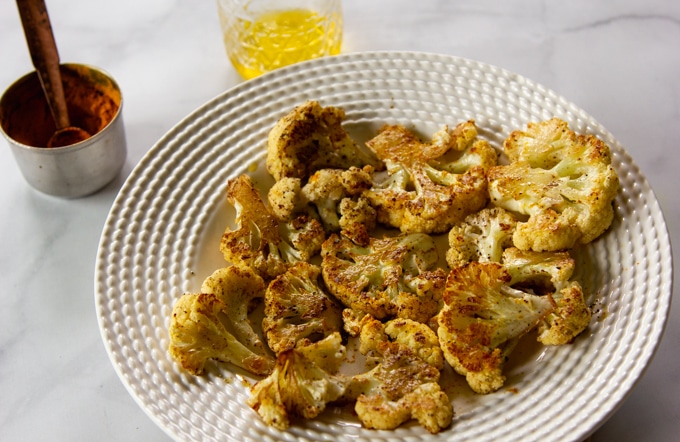
Below are a bunch of ideas to do just that.
The first option I am going to recommend is my turmeric poached eggs with vegan hollandaise. Both the eggs, and the sauce, are a natural combo with cauliflower.
After that, you’d likely want some greens with it.
Depending on the season, you could choose braised kale, leeks, or Swiss chard. Or you could go with fresh arugula and/or spinach, perhaps along with some feta cheese?
Another fantastic pairing here would be tomatoes.
Tomatoes go swimmingly with turmeric, as the acidic taste will compliment the turmeric cauliflower exceptionally well.
In fact, you could sauté some tomatoes together with the cauliflower. Or simply throw some cherry tomatoes into the sauté.
For another nice color contrast, try the sauté pairing with red peppers, or any colored pepper for that matter.
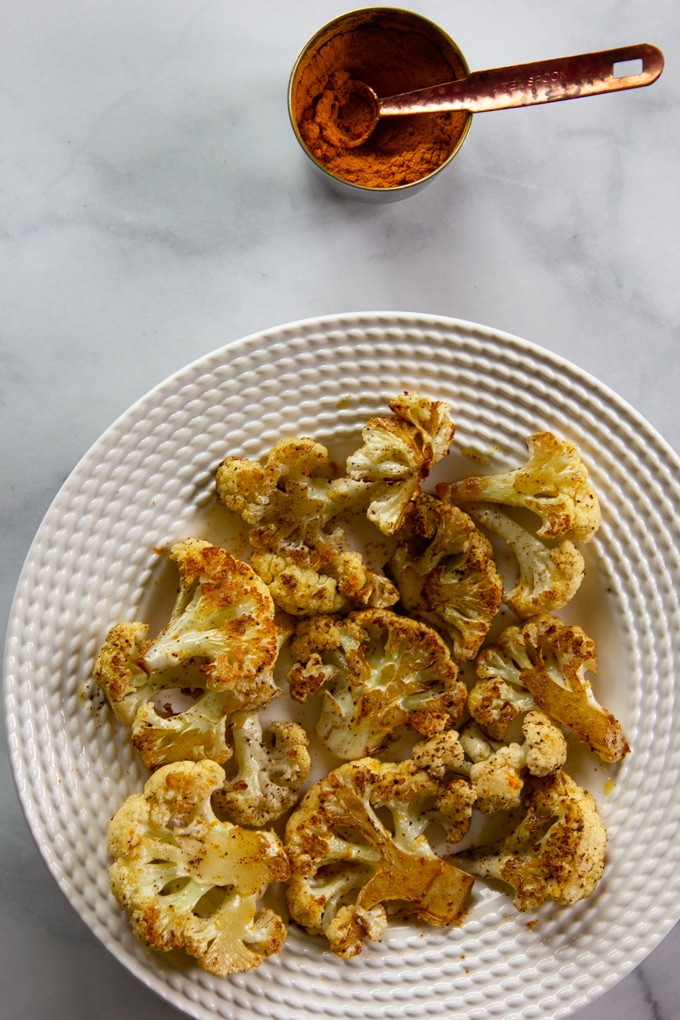
You may also consider enjoying turmeric cauliflower with anything involving eggplant.
Or what about going Mexican? Turmeric cauliflower goes great with anything Mexican.
One of my favorite tricks is to sauté some garlic, onion, and fresh herbs in olive oil, and then add in a can of black beans with a pinch of salt and pepper.
Add a bit of water and simmer for 10 minutes or so, and you’ve got a filling for tacos or burritos, or have it with rice. Add in those tomatoes and peppers from earlier, and you are set for a complete dinner.
Conclusion & Recipe
Hopefully I have helped you plan your next meatless meal.
Let me know in the comments below what you will have with your turmeric cauliflower.
Enjoy this dish … until next time!
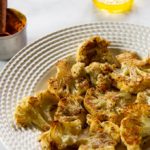
Turmeric Cauliflower Slabs, Caramelized In Ghee
Ingredients
- 4 cups cauliflower sliced into 1/2-inch slabs
- 2 tablespoons ghee (see notes)
- 1 teaspoons turmeric powder
- 1/8 teaspoon red chili powder (substitute with black pepper or cayenne pepper)
- 1/2 teaspoon Himalayan pink salt or to taste
Instructions
- In a large non-stick skillet, heat ghee on medium heat. Add turmeric and red chili and stir for no more than 30 seconds to release the flavor and aroma.
- Add prepared cauliflower with salt and toss (or stir) to evenly coat. Arrange the cauliflower in an even layer on the skillet and leave it to brown, around 5 minutes. To speed cooking, cover the skillet with a lid and add a splash of water.
- After the first side is nicely browned, turn each piece of cauliflower using a fork. Cook until the the second side is brown and caramelized.
To serve
- See the last section of the post above for a bunch of dinner ideas, and ways to enjoy this turmeric cauliflower. Nobody says you can’t just munch it up on its own either. Enjoy!
